Nature is the world's best designer and all of its designs are sustainable networks built on patterns. Understanding patterns and how to use them for design is the basis of permaculture and sustainable food production.
You can learn about permaculture reading my post What Is Permaculture? - Permaculture Basics With Geoff Lawton
Lots of people try their hand at designing a permaculture garden but don't take into account the design principles behind permaculture to maximize production and reduce the work and resources needed. One mistake commonly made is designing in straight rows. Nature abhors a vacuum but it also doesn't like straight lines.
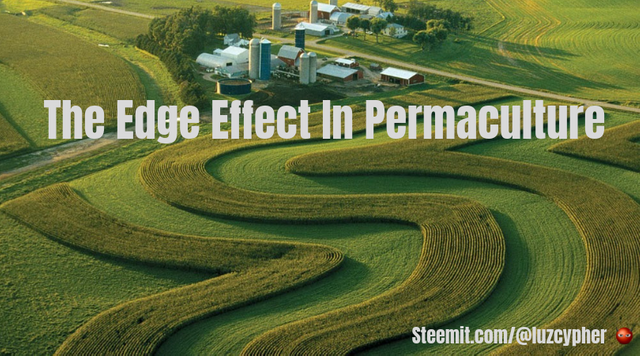
Most traditional gardens are designed for machines and are not the way nature would design. The typical garden will have straight, parallel rows so that tractors and people can walk between them, but nature doesn't design with straight lines with very good reason.
Straight lines in a garden create the least amount of edges possible while increasing the possibility of erosion. The more edges we can create in a garden the more possibility for life to thrive.
Geoff Lawton elaborates on the benefits of creating more edges when designing permaculture.
Elaborating On The Edge Effect For Increasing Yield
The Edge Effect In Rows
This edge effect is something to strive for when designing with permaculture principles. So, what is edge effect?
The edge effect is an ecological concept that describes how there is a greater diversity of life in the region where the edges two adjacent ecosystems overlap, such as land/water, or forest/grassland. At the edge of two overlapping ecosystems, you can find species from both of these ecosystems, as well as unique species that aren’t found in either ecosystem but are specially adapted to the conditions of the transition zone between the two edges. source
These principles work on both a micro and macro scale. For example, when designing something as simple as a row of vegetables in a garden we can create more food and diversity while reducing weeds and soil erosion and increasing water retention simply by creating more edges in the row by doing away with straight lines.
Take a look at this image of three vegetable row designs. Imagine the first two are strings. If you pulled the curved string tight on the second row it would be longer than the first row. You're basically fitting more square feet of row in the same space and creating more edges in the same space.
This increases the planting sites available in the same space. The curves will also stop the flow of water falling on the bed giving the water time to soak in instead of flowing away from the plant roots.
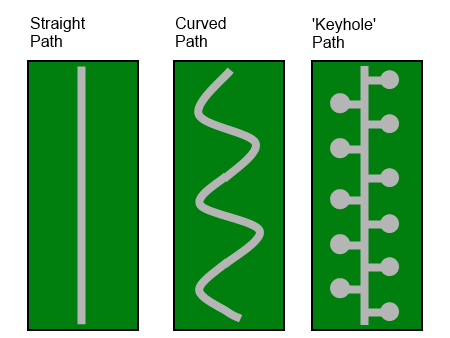
As mentioned earlier, when more edges are created in an ecosystem, whether on a micro or macro scale, there will be a greater diversity of species than either of the two separate ecosystems and have significantly greater productivity, for the following reasons:
- Resources from both ecosystems can be accessed in one place.
- Conditions such as air temperature, humidity, soil moisture, and light intensity levels all change at edges.
- Variations in the conditions at the edges can create favorable microclimates which can support unique species.
- Increased availability of light to plants along the edges allows more plants to be supported (greater diversity) and increases productivity.
- Increased plant diversity increases herbivorous insects, which increases birds, and ultimately predators.
- Ecosystem edges and borders act as ‘energy nets’ or sieve, capturing the massive movement of materials, nutrients, and energy across their boundaries – leaves and soil are blown by the wind against barriers, shells wash up on the beach, etc.
- Adjacent ecosystems are connected via flows of energy, material (nutrients) and organisms across their boundaries, and these flows can exert strong influences on the fertility and productivity of ecosystems. source
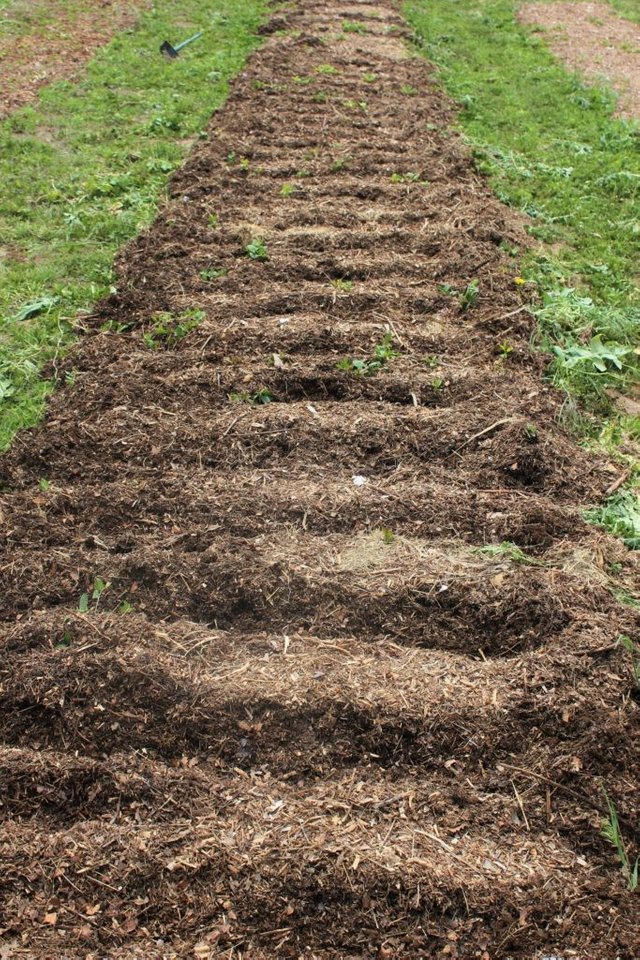
Even planting off-center in a straight row increases the edge effect and allows for more plants per row as illustrated in this image.
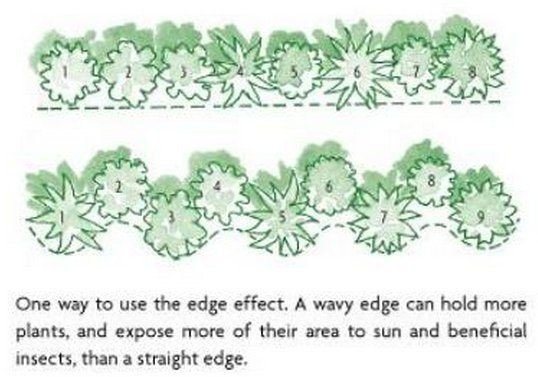
Another great design principle is to build rows on contour with the landscape to capture and slow down water as it moves across the land. When building rows on contour it will naturally create curved lines because, as mentioned, nature designs in curves not straight lines.
In home gardens, we don't need to design with lots of space between rows because we are not using machinery to harvest. A typical garden always has a lot of space between rows because that's what we grew up seeing a garden is supposed to look like but in reality all that open space is a place that weeds can get in and take hold. Push the rows together and grow food there instead of weeds. You'll get more food and less work.
So, instead of making your rows like this:
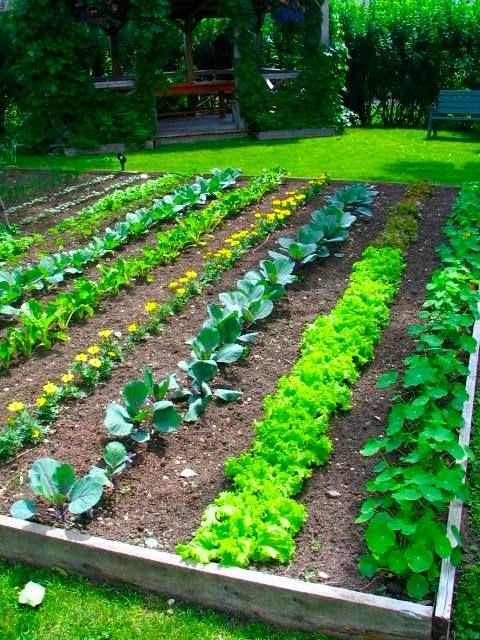
Design the way nature designs like this:
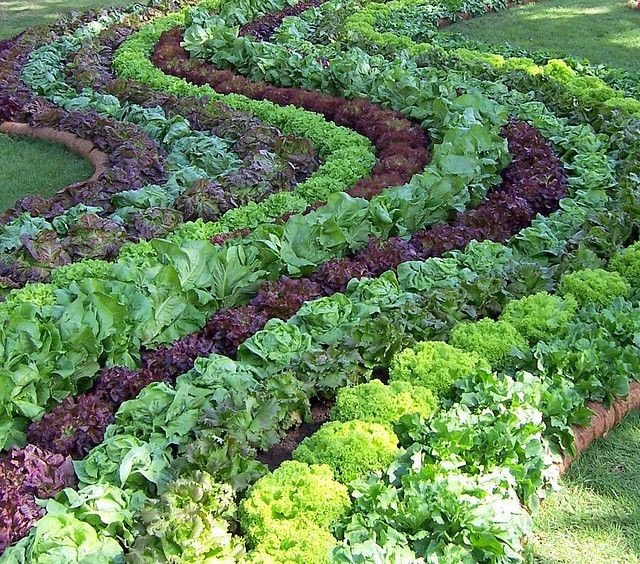
By filling the space with more food crops and designing it on contour there will be more water retention and the plants act as a living mulch so water will not evaporate. Instead of requiring more water it actually conserves water and makes better use of it. This results in more food and less watering and weeding. There's still plenty of room to walk between the plants.
Someone once said to me that they don't need to grow that much food. That makes no sense to me. Do they need to water and weed their garden more often? Food can be traded for other things they do need and the reduction in work is worth it alone. Would you prefer to grow weeds in that space instead? Of course not.
Even if the extra food went to waste it could be feed for chickens, traded for eggs with another gardener, sold at the market, or tilled into the ground to make compost. At the very least it's not weeds growing in your garden.
Here is a short video of a garden I built using these principles. You'll notice it is packed with food and there are no weeds. Actually, chickens did most of the work. The garden is packed full of compost and thriving needs almost no water or weeding and produced food for years. You can barely see the paths because all the available space is in production.
By mixing flowers that attract beneficial insects and mixing vegetables all together the plants compliment each other and it confuses insects so you don't need pesticides. These kinds of gardens are super productive and require less work. You can see how I got my chickens to plant this garden by reading Chickens Planting Gardens - How To Get Chickens To Plant Gardens, Not Destroy Them
Edge Effect In A Permaculture Garden
The Edge Effect In Circles
Designing edges are not limited to creating rows. It can also be incorporated in a circle. Instead of creating a circular vegetable bed in a perfect circle you can use the same design principle to create more edges by design.
We can replicate this pattern in our designs to maximize the available edge. If we are building a pond for example, without changing the size of the pond, we can double the length of the edge (the earth/water interface), and therefore squeeze in twice as much productive plants around it. In the example below the mathematical calculations show how for a pond based on n 11.3m circle, we create 100 square meters for the water surface, and by changing the edge from a straight one to a wavy, we can double the effective circumference. source
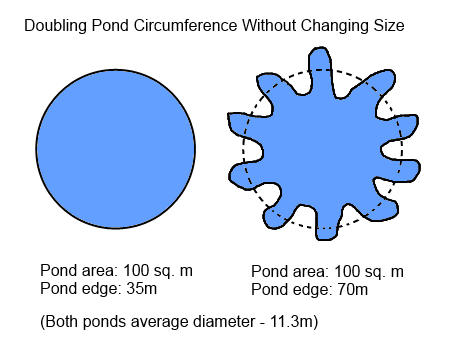
This same principle can be applied to round garden beds. Just by creating an S-shape along the edge of the circle we create more edges and area in the same space. More edges create more microclimates and trap nutrients and debris that falls or passes by the edges creating a nutrient trap. The more edges we create, the more opportunities for life to thrive in those abundant niches.
The Edge Effect In A Keyhole Garden
Using the same principle we can expand on these patterns to increase the available growing space by creating keyhole gardens. Imagine a typical 4-foot wide growing bed about 10-feet long. Now bend it into a circle and you'll end up with something that looks like this.
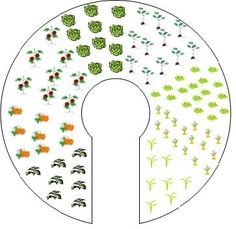
This shape will retain more water, reduce the space needed for paths and fit more plants in a smaller space. It also needs less mulch and weeding. You're essentially bending rows into a circle to reduce the space need for the same number of planting sites.
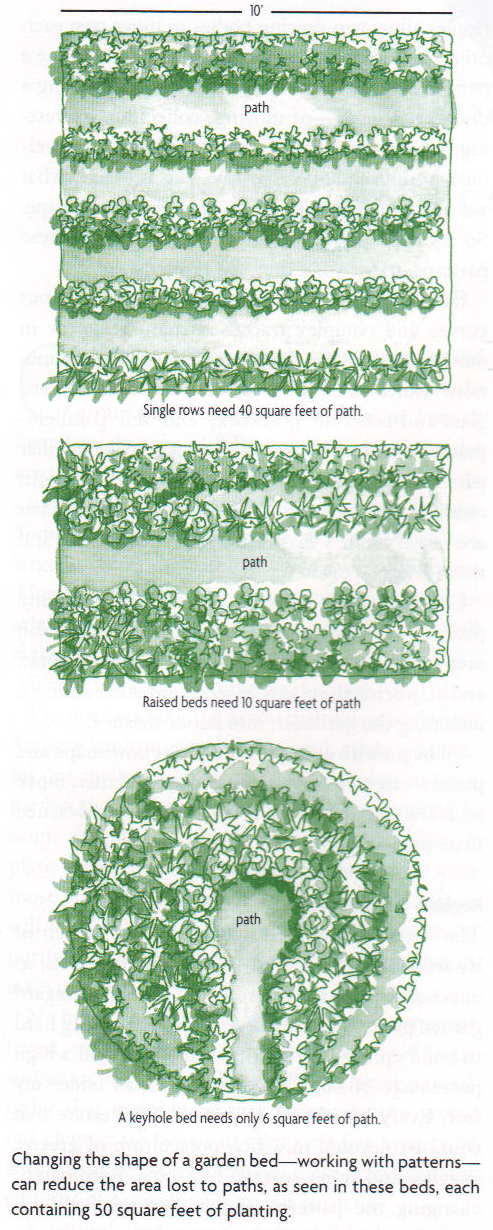
If we bend that rectangular raised bed into a circle—or, more accurately, a horseshoe shape—even more path will disappear. By a simple trick of topology, the path shrinks to a tiny keyhole shape, which gives this space-saving garden layout its name: keyhole bed.
Here's what happens. If we wrap a typical 4-by-15-foot raised bed into a U shape with a small central opening for a path, we cut the path down from about 22 square feet (figuring an 18-inch-wide path down one side of the raised bed) to 6 square feet. Less than a quarter of the ground is surrendered to paths. source
Creating multiple keyhole garden beds next to each other in a circular pattern you'll end up with a pattern that looks like this, something called a mandala bed which is particularly suited for flat growing areas.
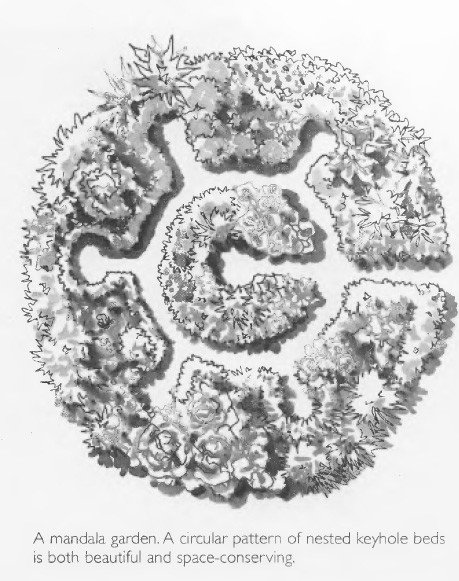
By planting shorter crops that you need to harvest often near the paths and taller crops that need less attention in a season toward the back of the keyholes you'll maximize the efficiency of the garden and save on foot traffic as you harvest food. All this is made possible by good design.
This type of design also acts as a trap keeping water and nutrients on site instead of draining away from the site and all the extra edges create multiple microclimates for all sorts of life to thrive.
If your growing area is not flat though you would be better off building a design that moves with the contour of the land as described earlier in this post.
Designing as nature does and getting rid of the straight lines found in a typical garden is always going to produce more food for less work in a home garden. Those straight lines were designed for machines, not for home gardens so when planning your next garden move away from designing with straight lines.
Images Of Gardens Designed Using Permaculture Edge Effect
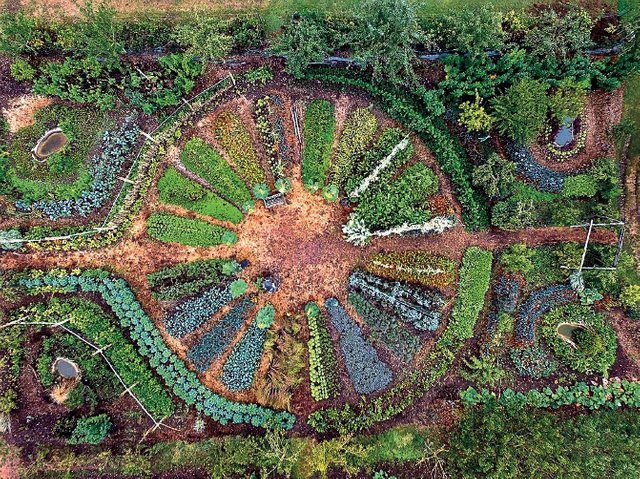
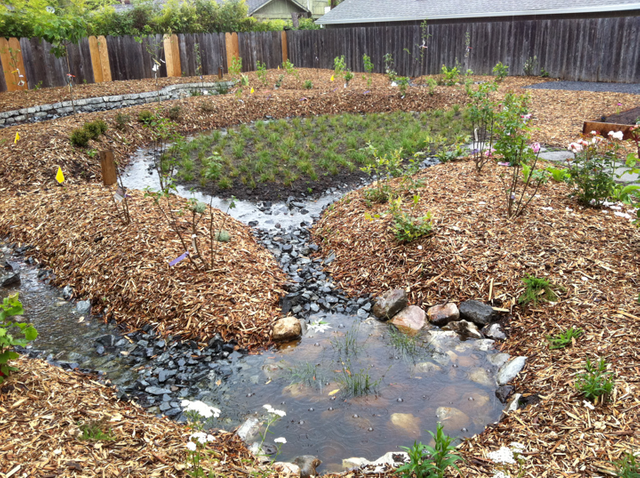
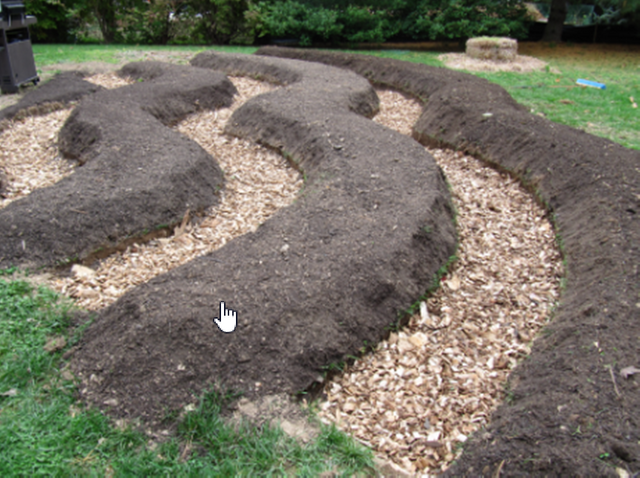
Growing Food Crops
Growing fresh strawberries are a wonderful summer treat, especially if they're picked right out of the garden. There are two different ways to plant strawberries, depending on the type. Strawberry plants are widely adapted and they can even be grown as far north as Fairbanks, Alaska. Strawberries can be grown in hanging baskets* very easily. Use good soil and be sure to water it often. Remember, strawberries like lots of sun and a hanging basket in the sun will need to be watered more often to prevent it from drying out.
The best time for growing carrots in the spring and in the fall. In the spring you want to plant them two to three weeks before the last frost and in the fall want to plant in 10 to 12 weeks before the first frost. Carrots are a fairly easy vegetable to grow once you get the soil right. The best growing soil is sandy, loose, well-drained, rock free, and high in organic matter.
Peas are a great crop to plant before the last frost. Direct sow peas as soon as the ground is workable, but not soaked. For many areas, February and March are your prime pea planting times. Peas can also make a great fall crop and can be planted at the tail end of the season when the fall weather starts to set in. Did you know peas can actually fix nitrogen in the soil? And if you're planting in a new garden you can add some rhizobacteria when planting and not only will the peas grow better but the soil will be richer for the next crop.
Beets, or beetroot, are a staple of my vegetable garden. I love them roasted with oregano and a grind of the salt mill - just delicious! Beets are very easy to grow from seed and you won't have to wait long until harvest time. Although beets have the highest sugar content of all vegetables, most people can safely eat beet roots a few times a week (and their greens in unlimited quantities), enjoying not only their sweet, earthy flavor but also their powerhouse nutrients that may improve your health in the following ways.
Growing cucumbers is easy. I'll show you how. Cucumbers sprawl so they take up a lot of space. My cucumbers sprawl right out over the raised bed. If you don't have tall raised beds you can trellis your cucumbers vertically so that they take up less space and keep the fruit off the ground. One of my favorite things about cucumbers is you can make pickles with them and keep them for a long time. Making pickles is easy and it starts with the variety you grow.
Blueberry muffins, blueberry pie, blueberry ice cream, blueberry pancakes, plain old blueberries, and my favorite, blueberry daiquiris. if you like them you can grow them in containers or in the garden bed I'll show you how! For successful blueberry garden its important to choose the right variety. The number of chill hours in your area will help you make a decision on what blueberry varieties to plant and you can contact your local ag department to find out the chill hours in your area.
There are some major benefits to planting potatoes in your backyard. You can plant varieties that are hard to find, or are very expensive, and you can harvest virtually all year long if you live in a climate like I do. The best way to plant potatoes is to start with certified seed potatoes. It's not a good idea to use the potatoes you find in the grocery store, because they're not certified disease-free and sometimes they're treated to prevent sprouting.
Onions, leeks and shallots are all staples in the kitchen and they're good for you and healthy for your heart. Onions can be grown a few different ways, either from transplants from onions sets, or you can start your own onion seeds. Onions, leeks, and shallots can be planted in the spring or the fall, but between October and December is a great time to plant onions and leeks in just about everywhere in the U.S.
Lettuces and greens are some of the easiest greens to grow. Start your lettuces and greens in trays about four weeks before you wanna transplant outside into the garden and they like daytime temperatures between forty-five and sixty-five degrees. You can succession seed lettuce every ten to fourteen days and that way you'll get a continuous supply When it comes to direct seeding loose leaf lettuce there are a couple of ways you can do it.
Learn how to plant artichokes! Artichokes are a wonderful vegetable for eating, but they're also a beautiful landscape plant. They're native to the Mediterranean and they're cold hardy down to about zone 6. You can grow them as an annual if you're in a colder climate. Artichokes are delicious too and the hearts can be pickled to extend the harvest into a supply of food in the winter.
Basil is a wonderful herb that is a delicious part of both Asian and Western cuisine. I'll show you how to grow great basil and make delicious pesto sauce fresh from your garden. Growing and eating basil supports your heart and liver health, is loaded with antioxidants, improves your digestion and makes your breath fresh, it's antibacterial, antimicrobial and anti-inflammatory, packed full of vitamins and minerals and helps detoxify the system. Besides all that it tastes great!
Growing shiitake mushrooms is a lot easier than people think. The first time I grew shiitake mushrooms I did it on oak logs and grew about 1000 pounds of mushrooms, but these days anyone can grow a batch of fresh shiitake mushrooms even if they live in a small apartment and you don't need to cut down oak trees to do it.
Microgreens are packed with nutrition* with 4 to 40 times more vitamin C, K, E, and beta carotene than the adult vegetable. The health benefits of growing microgreens, newly sprouted edible plants, are packed with concentrated nutrients, minerals and vitamins, very fast to grow, and a super healthy food that can be grown in your apartment.
Garlic has several health benefits and has been used to treat many health problems. Here you will find some of the best 15 amazing benefits of growing garlic. Garlic can help fight bacteria and viruses, improve metabolism, reduce weight, regulate blood sugar and blood pressure, lower cholesterol, and improve allergy symptoms, and it also tastes great. Every gardener should learn how to grow garlic.
Why buy fertilizer when you can grow your own organic fertilizer? We’re growing comfrey for fertilizer in garden beds, around fruit trees, and even more along the fence. What is the fertilizer we’re growing? Comfrey increases nitrogen and phosphorus, but the amount of potassium is especially impressive. In addition to nitrogen, phosphorus, and potassium, comfrey also accumulates magnesium, calcium, iron, and silicon, adding nutrients to the soil and taken up by food crops, these minerals will get absorbed by the plants and those eating those plants.
Chickens are more than a food source, they plant my whole garden, working from sunrise to sunset, weeding, fertilizing, controlling pests and planting, if you know how to manage them. A closer look at properly raising chickens reveals that their usefulness as food just scratches the surface of what they can do for a farmer or gardener and properly managed, chickens can produce more food than just eggs and meat. We'll explore that more in this post but first, let's dig deeper into what 'services' a chicken can provide.
Worm castings have a number of advantages over compost alone. Castings have a higher percentage of humus than compost, which improves water retention and aeration. They also bind micronutrients like calcium, magnesium, and sulfur that might otherwise be washed away by heavy rains. They’re rich in beneficial bacteria, and, very importantly, they contain plant growth hormones that increase germination rates, and make plants grow faster, larger, and produce more. Learn how to grow earthworms in your garden and growing food will get easier, tastier, and healthier.
In today's world of instant gratification, it can be a struggle taking a long-term view of anything. Companies, jobs, and opportunities come and go faster than we can keep up with and everything is always in a state of constant change. But [how to be successful on a platform like Steemit](https://steemit.com/steemit/@luzcypher/growing-your-steemit-blog-to-create-long-term-results( requires a persistent approach that embraces a long-term view to get the results we strive for. To help keep me focused on the big picture I like to use an analogy of growing a tree. In many ways growing an active Steemit account is like growing a fruit tree. I have grown many varieties of trees and plants from seed and the similarities are striking.
Relate Posts
Life Begins In The Soil - The History And Significance Of The Soil Health Movement
Sustainability Begins In The Mind - Rejuvenating Drought-Struck Land Means Thinking In A New Way
Power Of Permaculture - Sustainable Design Prevents Erosion After 100 Year Flood Event
What Is Permaculture? - Permaculture Basics With Geoff Lawton
Quit My Six Figure Job To Grow A Food Forest
Luzcypher's Announcement For Steem Witness




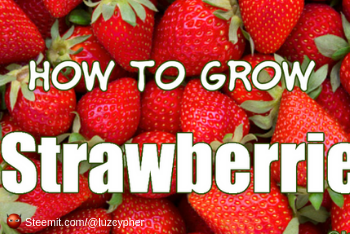
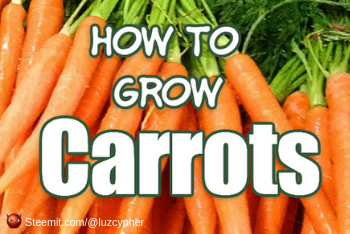
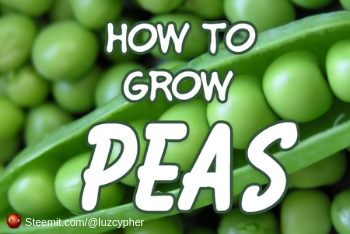
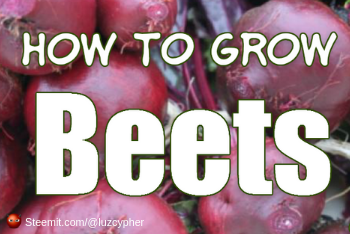
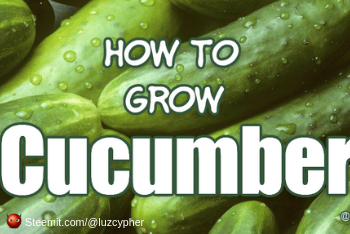
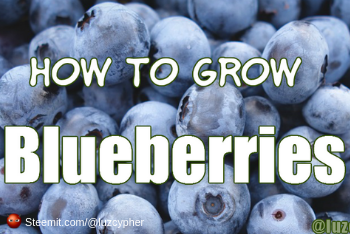
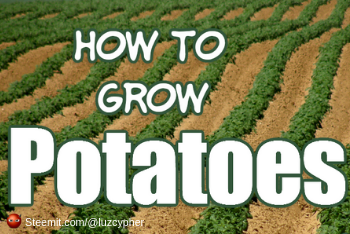
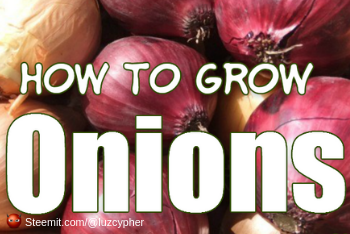
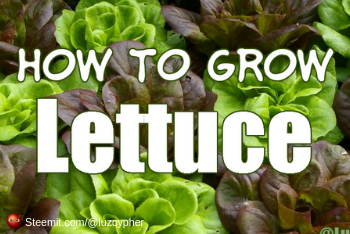
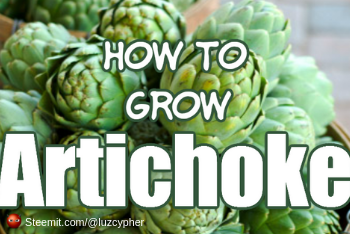
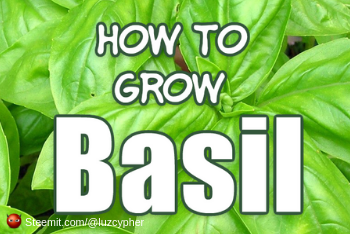
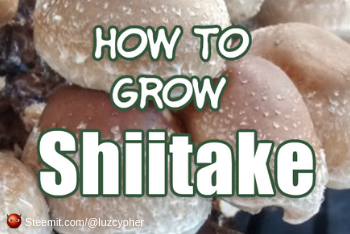
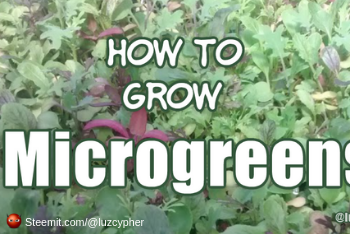
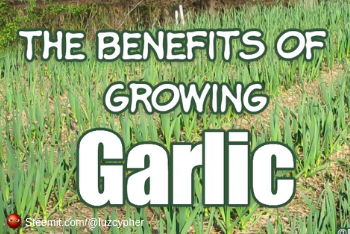
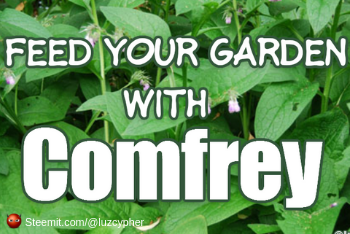
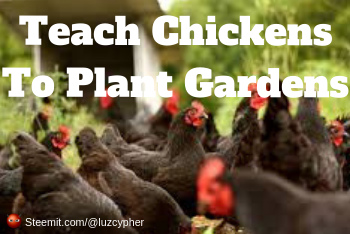
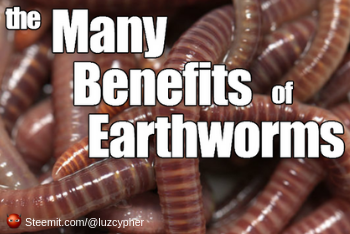
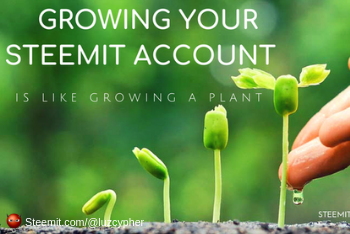
@luzcypher good to see you producing more permaculture and non-steemit related content. I always enjoyed reading your permaculture stuff and stories. Hope Vietnam is treating you well.
Downvoting a post can decrease pending rewards and make it less visible. Common reasons:
Submit
How have you been? Good to see you're still on Steemit.
Downvoting a post can decrease pending rewards and make it less visible. Common reasons:
Submit
You know we work so hard against nature that often times we work against ourselves. Nature has no straight lines as examples, but in all our wisdom we decided they were better... probably why humanity has gone insane. We try so hard to work against nature than with it... this is a simply brilliant concept (well all of them), thank you for bringing this to our attention (sort of like the self sustaining gardens). "It's not nice to fool Mother Nature".
Downvoting a post can decrease pending rewards and make it less visible. Common reasons:
Submit
Nature knows how to design. Think about it. Does nature weed a garden, plant or plant one? Does it till soil or monocrop? Nature mixes all its crops together and has different crops using the same land over different periods of time. It stacks functions and designs within designs.
We can mimic these principles and reap the benefits.
Downvoting a post can decrease pending rewards and make it less visible. Common reasons:
Submit
Hi @luzcypher!
Your post was upvoted by @steem-ua, new Steem dApp, using UserAuthority for algorithmic post curation!
Your UA account score is currently 6.689 which ranks you at #132 across all Steem accounts.
Your rank has not changed in the last three days.
In our last Algorithmic Curation Round, consisting of 188 contributions, your post is ranked at #21.
Evaluation of your UA score:
Feel free to join our @steem-ua Discord server
Downvoting a post can decrease pending rewards and make it less visible. Common reasons:
Submit
Such a great informative post @luzycypher I use raised beds for my veg, but this year, in the beds, I'm going to densely plant them with annual flowers and herbs and see if I can stop weeds and lure insects to the flowers away from veg leaves and see if this 'beautiful mess' of mixed food/flowers will work for me.
I also have to deal with winds and salt air as I'm on the sea, but a fence with a border of sturdy herbs help as a bit of a wind break.
Downvoting a post can decrease pending rewards and make it less visible. Common reasons:
Submit
Thank you for these great inspirations! We are just now making beds in a new area, and we just started with straight lines, but now I'm thinking we need to make a beautiful drawing for the rest of the area!
Posted using Partiko Android
Downvoting a post can decrease pending rewards and make it less visible. Common reasons:
Submit